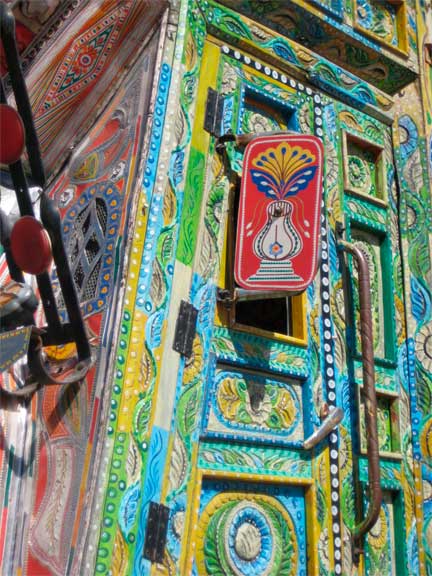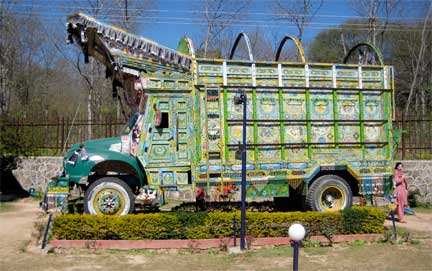Color in the USA
Please use the "Color in the USA" menu at the bottom left
or link to any of the articles below:
Please use the "Color in the USA" menu at the bottom left
or link to any of the articles below:
What does it feel like to be a young adult in Pakistan? Is the country really the way the media presents it with themes of terrorism, religious extremism, oppression of women, or any other volatile topic that attracts attention? Some artwork from the Visual Communications students at Beaconhouse National University in Lahore tells a different story.
During my last week in Lahore, several design students submitted artwork that reflected their experiences about the current state of affairs in their homeland. The following two pieces are examples of the art and messages they conveyed.
This large map of Pakistan (8 x 3 feet / 2.5 x 1 meters) was a floor sculpture. It was covered with green hands, reaching upwards. (The color of the flag of Pakistan is green.) The piece is a true testimony to the search for peace and stability in Pakistan.
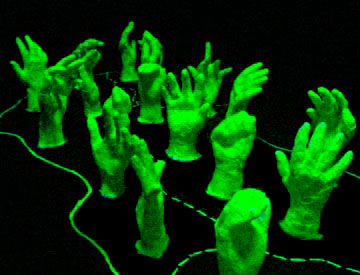
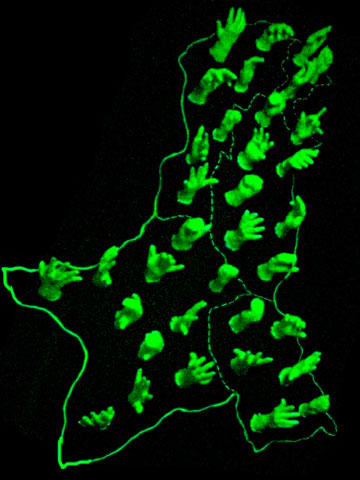
This turned out to be a very timely piece because on March 16, 2009, after several weeks of political protests and strikes (not unlike those of the Vietnam era in the US), the Chief Justice of the Supreme Court was reinstated. (As a friend explained, “The Supreme Court is *our* symbol of the top institution. Restoring him sends a message to those who removed him not to mess around with *our* institutions.) Hopefully, this is a turning point. Pakistan has the potential to be a democracy that inspires other countries in the region.
Another compelling political statement was a photographic image of the North-West Frontier Province (NWFP) that American drones are bombing. “Hellwood” (in bold white letters evocative of the world famous "Hollywood Sign”) was placed on top of the camouflage-colored mountains. Ali Haider passed away in 2010 but his spirit and art work lives on. His ancestors were from Afghanistan. He created the piece in collaboration with Janaka, an exchange student from Sri Lanka. This image presents another view – that of the tragedy of daily life - in this region . Although there may be pockets of militancy and religious extremism in the remote tribal areas, there are 21,000,000 people (none of whom have connection to terrorists) who are simply struggling to survive in this mountainous area, appropriately labeled “Hellwood.”
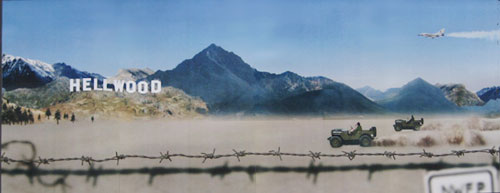
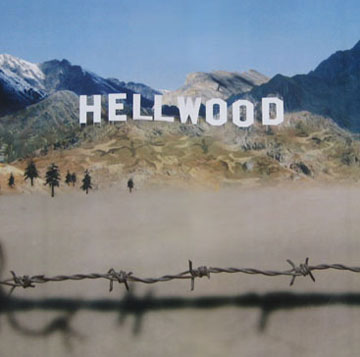

Ali explained the piece:
"My forefathers are from Afghanistan so that’s why I care for Afghanistan people. I never went to the NWFP but I have the relation of brotherhood because they are Muslims. I want help these people because they are helpless now a days. NFWP people get murdered without reason. Being a visual communication designer I want to do something for them and that situation. "
About the NWFP: The North-West Frontier Province stretches from the Himalayas in the north to the deserts in the south where it is bordered by the Baluchistan and Punjab provinces. On its western flank is the rugged terrain of neighboring country Afghanistan, which is accessed via the historic Khyber Pass through the mountains. Click here for more information and a map.
Consider this: A growing feeling among Muslims that they are under attack from the West could be a major contributory factor behind the growing insurgency in the region.
In conclusion, perhaps these students have succeeded in presenting the colors of the peace we all seek.
Students at Beaconhouse National University in Lahore, Pakistan wrote these "Letters to America." They could write the letter to President Obama, or the people of America, or to whomever they wished.
No one was required to write a letter - and students were given the option of remaining anonymous. More than 80% of the students in the color workshops wrote a letter and almost every one signed their name. For a full version of any of these letters, click on the image or the link below it.
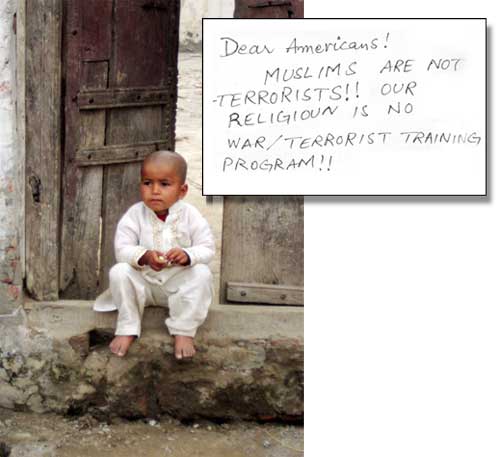
Manahil's Letter (page 1)
History and Background
The earliest known example of cotton is the fragment found at Mehrgarh, Pakistan, one of the most important Neolithic (Stone Age/7000 B.C. – 3200 B.C. ) sites.* Today, cotton textile production and apparel manufacturing are Pakistan's largest industries, accounting for about 70% of total export.
(* Source: Journal of Archaeological Science, Volume 29, Issue 12, December 2002, Pages 1393-1401)
During my last week in Pakistan, I conducted a color workshop for the students in the Textiles Department at Beaconhouse National University. The workshop included a field trip to the village - a small cluster of homes in the midst of the mustard fields that surrounds the Tarogil campus. The homes are primarily constructed of mud, mud-brick, and thatch. Unpaved streets and paths are filled with people dressed in traditional garb, donkey carts and buffalo carts (whose prototypes date back to the third millennium B.C.). No cars! A sense of timelessness . . . a step back to a time that most of us only see in movies. The visual landscape of Targogil village reminds us of that era in Pakistan that is the source of the earliest cotton fragment.
Tarogil Village Scene
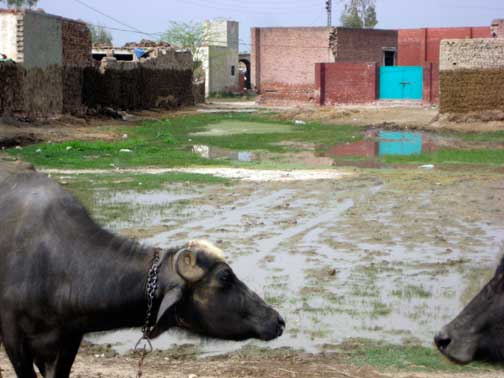
The Color Workshop
The assignment required that the textile students note the colors in the village. In other words, get up close to whatever they encountered – whether it were the colors of the mustard fields surrounding the village or the materials and surfaces of objects and structures, such as the bricks and iron gates.
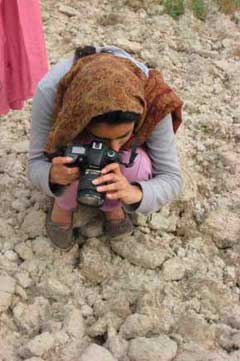 |
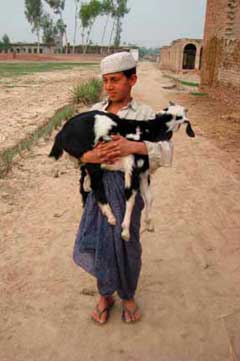 |
|
Photographing the colors of the rocks |
Boy and goat |
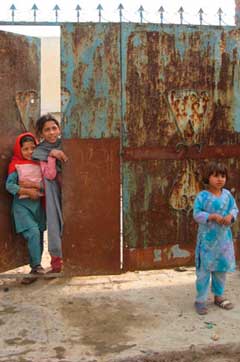 |
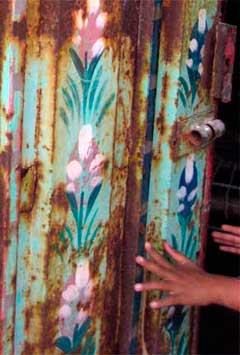 |
|
Children at the gate to a home |
Detail of a painted door |
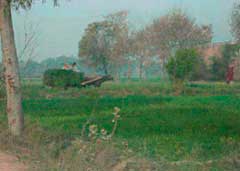 |
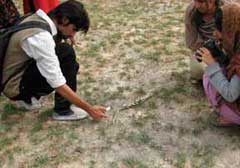 |
|
Mustard field surrounding the village |
Examining the colors of the earth |
More examples of color at Tarogil
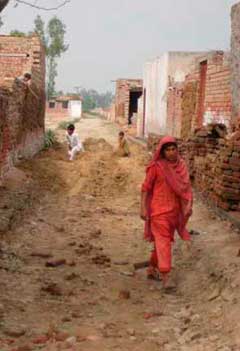 |
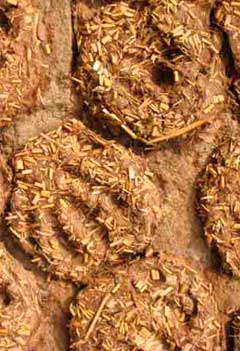 |
|
One of the main streets |
Mud and straw building material |
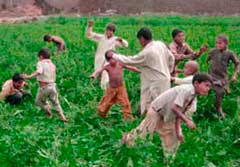 |
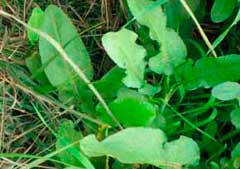 |
|
Tarogil boys playing in the field |
Vegetation |
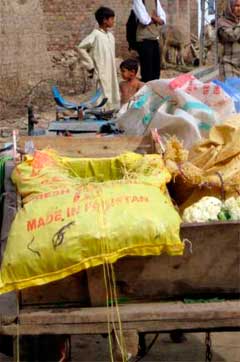 |
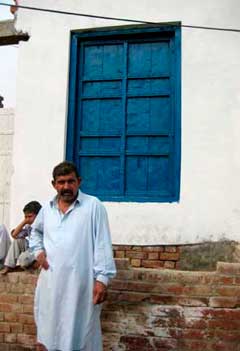 |
|
Groceries in a cart |
Brick wall, blue door, and villagers |
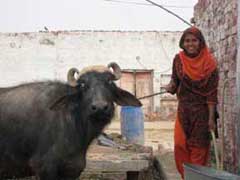 |
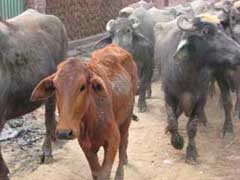 |
| Water buffalo and woman | A herd stampedes down the street |
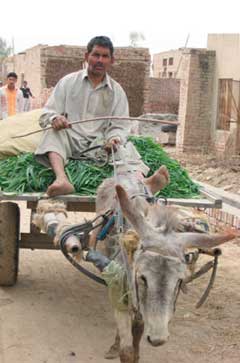 |
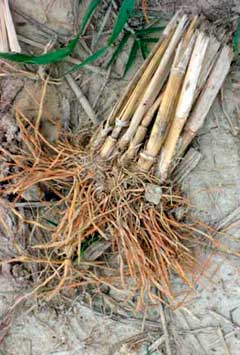 |
|
Donkey cart and fresh produce |
Found in the field |
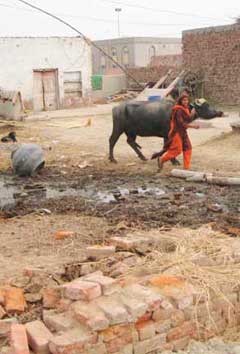 |
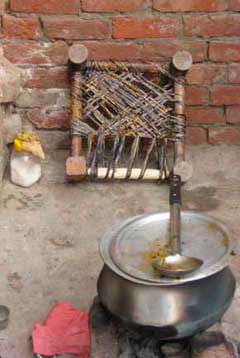 |
|
Village area |
Cooking tools |
|
After compiling their color notations, each student selected three favorite colors and two least favorite colors for a composition based on the Bezold effect. |
|
| Example of the "Bezold Effect" |
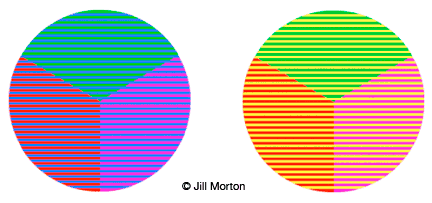 |
|
(Graphic from Color Logic, by Jill Morton)
Three colored areas in the background (the 3 pie-shaped areas) on each circular form remain the same. Only the color of the stripes on top of these areas changes. In the example above, the stripes change from blue in the circle at the left to yellow in the circle on the right. The transformational effect is quite amazing given the limited palette. |
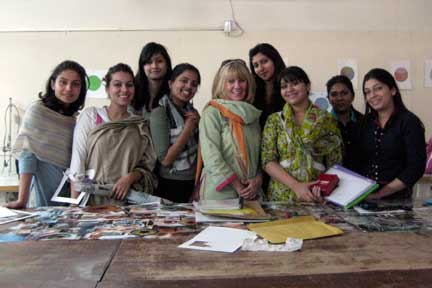 |
|
Assistant Professor Rohma Khan (far left), textile students, and Jill Morton (center) Examples of some of the "Bezold Effect" studies are on the wall behind the group. |
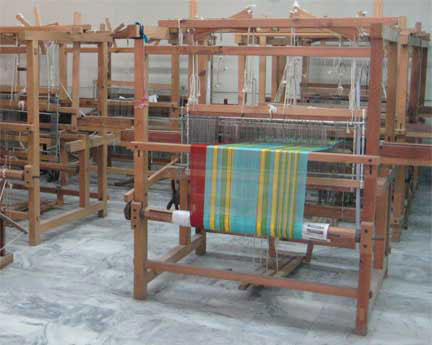 |
| Looms in the textile studio at Beaconhouse National University, Tarogil, Pakistan |
Jill Morton, March 2009
Pakistan is one of the most colorful places in the world. The following photographs reflect the timeless and timely colors of the people, landscape, architecture, food, and much more of what can be seen in this unique country.
Some questions to answer: Do any of the contemporary examples reflect the timeless symbolism of the color? How has the color has evolved over time? Could any of the contemporary examples of the color be found in your country?
|
Timeless Example of Blue Sky - spirituality, tranquility, immaterial, mystical Water - coolness, fluidity, cleanliness |
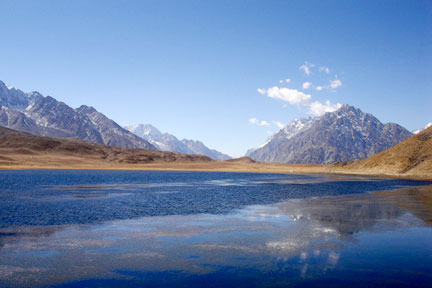 |
|
Blue in Pakistan Today |
|
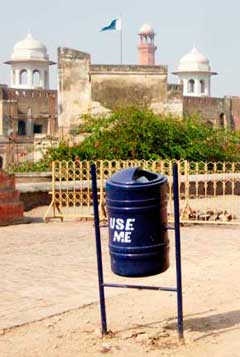 |
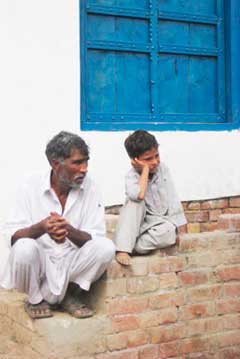 |
|
Blue garbage can |
Blue window shutters |
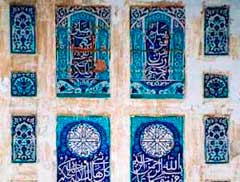 |
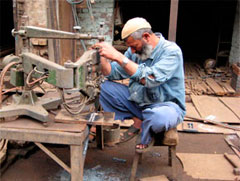 |
| Blue tile in mosque | Blue work clothes |
|
Timeless Example of Red Fire - power, warmth, excitement, energy Blood - danger, life energy, violence |
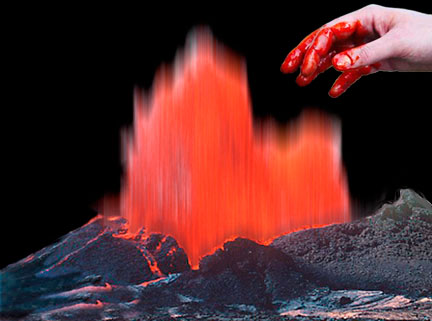 |
|
Red in Pakistan Today |
|
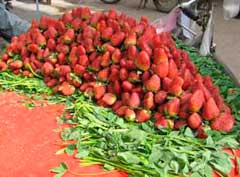 |
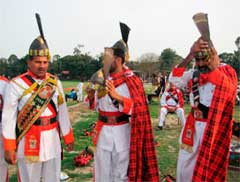 |
|
Red strawberries (also timeless) |
Red bagpipers' uniforms at polo match |
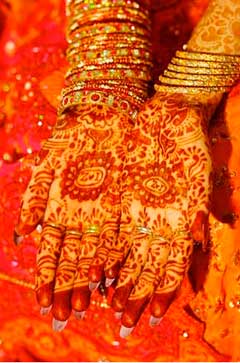 |
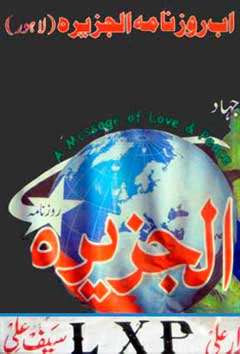 |
| Red henna hands & wedding dress | Red script on a sign |
Timeless Example of Green
Natural Landscape - growth, fertility, nourishment, renewal, hope
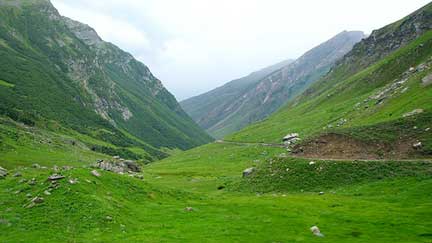
|
Green in Pakistan Today |
|
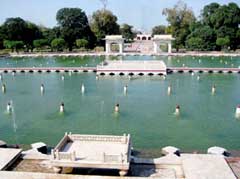 |
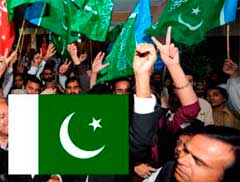 |
|
Shalimar Gardens in Lahore ( constructed in the 17th century) |
The flag of Pakistan |
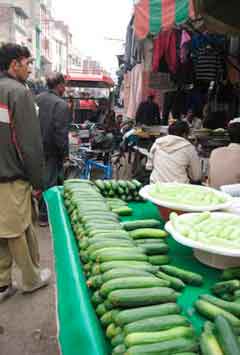 |
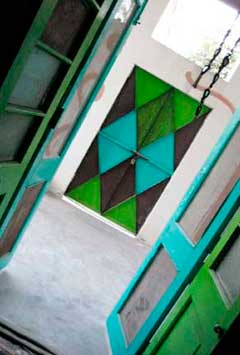 |
| Vegetables in Landa Market | Green door at house |
|
Timeless Example of Yellow Fruit and Flowers - happiness, luminosity, hope, warmth, nourishment |
|
|
|
Yellow in Pakistan Today |
|
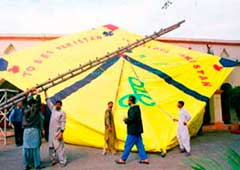 |
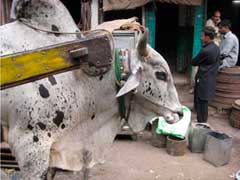 |
|
Kite and Basant (yellow) Festival |
Harness on ox |
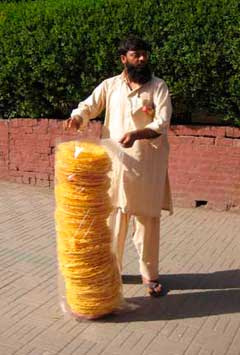 |
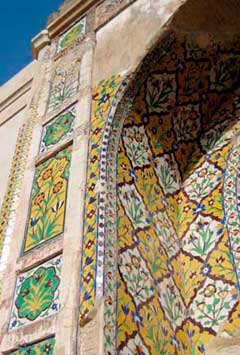 |
|
Big chips |
Mosaic tiles at Shalimar Gardens |
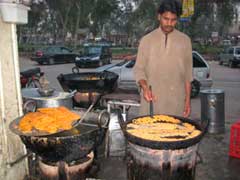 |
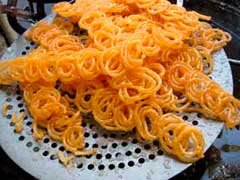 |
| Cooking jalebi | Jalebi (a sweet) |
|
Timeless Example of Brown Earth and Rocks - nature, strength, dependability, nourishment, security, warmth |
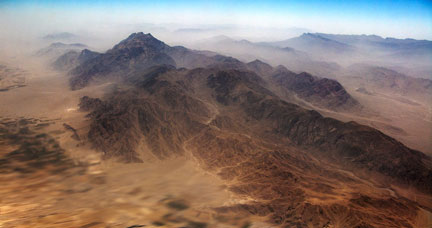 |
|
Brown in Pakistan Today |
|
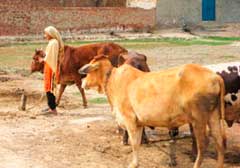 |
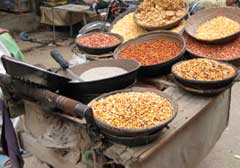 |
|
Water buffalo |
Nuts and grains in Landa Market |
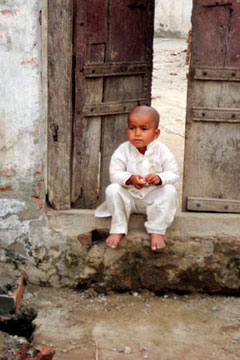 |
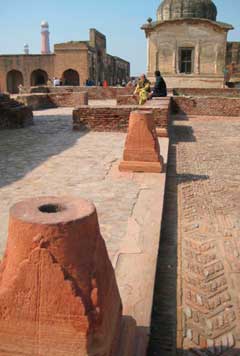 |
| Tarogil village | The Lahore Fort |
In conclusion, the most colorful of all ...
